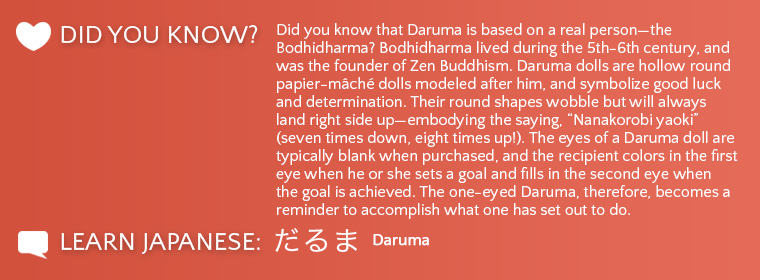


This Daruma doll is the Hime Daruma, or Princess Daruma. Made of papier-mâché, it is painted red with a gold diamond over the forehead and a white and green floral design painted on both sides and under the face. These plants are bamboo, plum blossoms, and pine, used for ceremonies like weddings and New Year's celebrations as symbols of good luck. The Hime Daruma's face is painted white with feminine features, including black eyes and eyebrows and red smiling lips. Her nose is textured and her hood is outlined in black to frame the face. Her neck has red, yellow, and red v-shaped paint stripes to indicate a kimono neckline. The back of Daruma has an uneven swath of unpainted papier-mâché, over which is painted a vase-shaped design with some curved lines around it in black.
Daruma dolls also come in the form of Princess Daruma (Hime Daruma) and Lady Daruma (Onna Daruma). This contrasts greatly with traditional representations of Dharma, who has traditionally been depicted as very masculine, with rough facial hair. During the widespread social changes of the Edo period (1600-1868), merchant-class depictions of a feminine Daruma were intended as satire, to make fun of the samurai class—but the doll maintained the same wholesome image of a bringer of good luck. The evolution of the feminine Daruma into Hime Daruma evoked the ancient story of Emperor Ojin (r. 270-310), whose mother, Empress Jingu (r. 201-269), visited the Dōgo hot springs when she was pregnant to wish for a safe pregnancy. Now Hime Daruma are frequently used as amulets for easy childbirth.